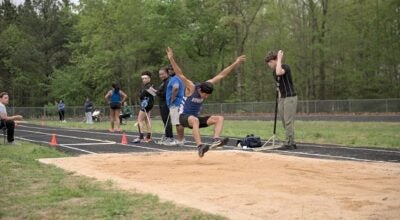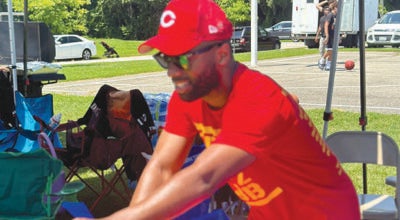PE Squad Is Ready To Serve
Published 2:31 pm Thursday, January 17, 2013
PRINCE EDWARD – For those who are attuned to the heart-hesitating sounds of an ambulance in transit, there's a lot more of that sort of thing going on these days. Prince Edward Rescue Squad has been busy.
Really busy.
Consider that the Squad responded to 2,700-2,800 calls in 2012 and, as of January 14, had already responded to 111 calls.
Time brings change and gone are the days when they averaged only one call per day.
Today, they average eight to 10 calls per day.
“We did some looking, did some different things and decided that we needed-we were dropping right many calls to Davis and Paladin (ambulance services) so we had to add a second daytime crew,” Rescue Squad President Bill Hogan explained. “So we have a crew that comes on at 7 a.m. to 7 p.m. and then one that comes on at 10 a.m. to 6 p.m. and then a crew at 6 p.m. to midnight. And then one…midnight to 8 a.m.”
If it sounds different from the way it used to be, it is. Once upon a time, the volunteer organization would call for volunteers to respond when calls came in. Now, crews are on site, ready to go.
The good news is also that during the heart of the day, when most emergency calls come, the squad now has two available crews instead of one. Two, with overlap, are on service from 7 a.m. to 7 p.m. daily.
Hogan figures about 63 percent of their calls are coming in during that time.
“No, people don't get away from their jobs any more-very seldom,” he says. “We only have two or three people that can jump away from a job now and they are business owners themselves…That helps, but it's not one of those cases that you can really depend on, because if you're really busy you can't leave your business.”
That's why they added the second crew, he notes. Hogan says it has helped quite a bit.
And they are already looking at a way to have a third crew available. While it's not needed all of the time, there are times when they do.
The Squad has about 35 volunteers, a figure that has remained fairly steady. In addition, there are about 40 associate members that help pick up calls, though they can't run them on a regular basis. Many are older life members that have been on the squad for a long time, but can't do it on a full-time basis.
Hogan, a long time volunteer, notes that it's been part of his life.
“It's just the ability to help the community, give back to the community and the fellowship of the people there,” he says.
They have about four active members who have served some 20 years or more.
It's also quite a commitment to service. Basic EMT training involves about 140-150 hours and takes about four months to complete. Training is offered on site and Hogan notes that they are trying to get certified through the state as a regional training center, or at least as a training center. (The state has changed requirements for training; they have to be a certified training center to be able to teach courses.)
Anyone interested in volunteering can call 434-392-6973 and leave a message or they can come by the building and pick up an application.
And, one never knows. Some have begun as college students and pursued it as a career-having gone on to become paramedics and flight nurses.
More area residents are looking to the Squad for service instead of self-transporting.
“I think that people are trusting and are reassured more with the Squads because of our training and our abilities now that we can give so much better…pre-hospital care,” Hogan said, “that faith in the organization, that we do a better job, get a better response time.”
He noted that from the time they receive the call from dispatch to having a unit on the road is under two minutes.
“A lot of times, it's under a minute,” Hogan adds.
A remarkable change from the days when it took 10 to 15 minutes when tones were sent and volunteers had to come to the Squad building before they could get rolling.
“We have somebody available to respond immediately to the first call, 24/7, 365 (days),” Hogan said.
The Squad covers the majority of Prince Edward and about 10 miles into Cumberland, a sliver of Charlotte on its southern end (near Abilene). Meherrin volunteers cover much of the southern portion of Prince Edward. (The Squad also has an agreement with Buckingham that they will cover up to Sheppards if called. They also have some Squad Care subscribers in the area as well.)
The Squad depends on billing insurance companies and Medicare. Prince Edward County also chips in a donation of $60,000, which the Squad uses to help pay for the refurbishing work on the ambulances-the Squad pays about $10,000 per month. (Prince Edward's contribution roughly works out to about two dollars per call in the county). Cumberland County also chips in about $8,000.
Squad Care, specifically, covers the uninsured portion of Rescue Squad services for medically necessary ambulance transportation to Centra Southside Community Hospital. It includes any costs for co-insurance and the deductible not covered by an individual's insurance. The cost to participate is $35 and covers members of an immediate family (spouse, minor children and parents living in the same household as listed on the application) living in the same household until the end of 2013. (Those interested in enrolling can still send the Squad a note with basic information-name, address, date of birth of each individual-to P.O. Box 87, Farmville, VA 23901, c/o Squad Care and include contact information or call 392-6973 and leave a message.)
The Squad is able to respond to about 99 percent of their calls, but they also have a mutual aid agreement that, if they're already on a call, or two calls and get a third (which does happen) and are unable to get a crew-they have a mutual aid agreement with Davis and Paladin where the two services will accept Squad Care.
Those who have Squad Care do not pay for the ambulance to take them to Centra Southside Community Hospital.
Squad Care is also important to the Squad. They use the majority of the funds for training and Hogan noted that whatever is left over at the end of the year-that they don't use for training-goes to keep equipment up to date and first class.





